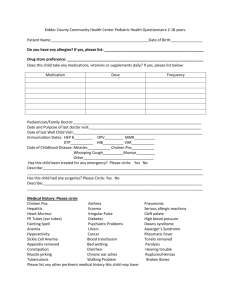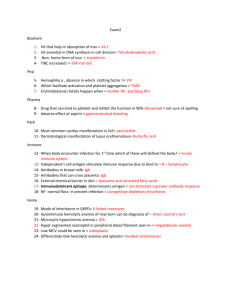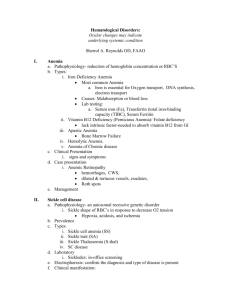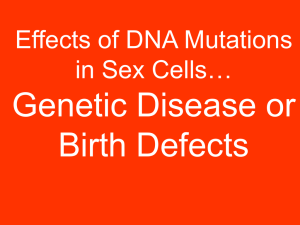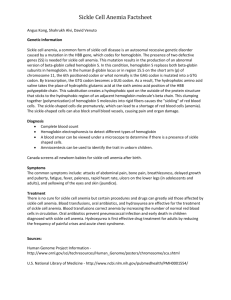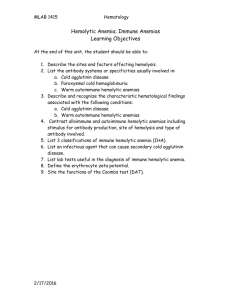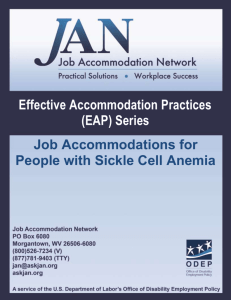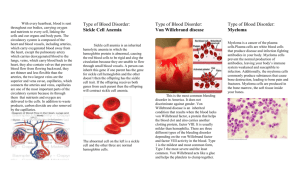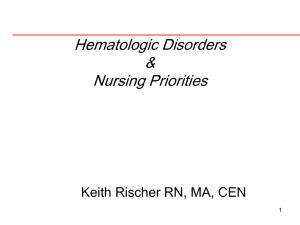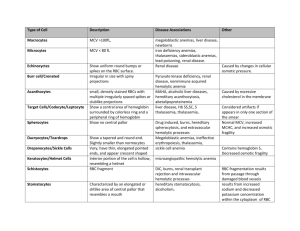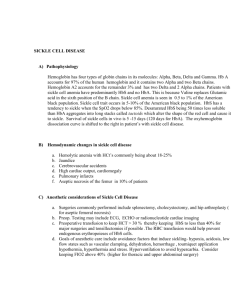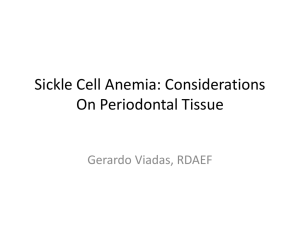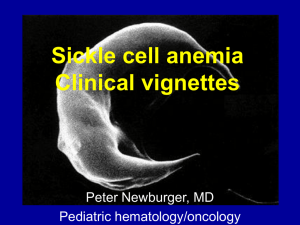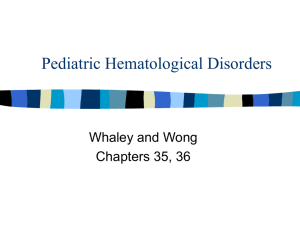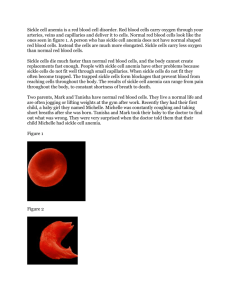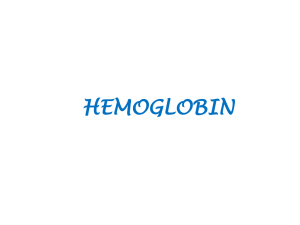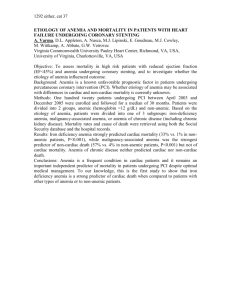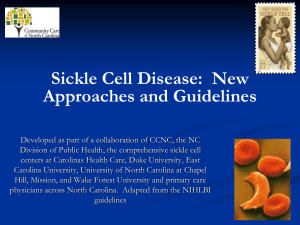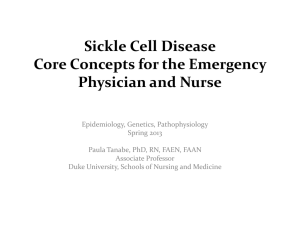Biotherapy for Hematology Disease Processes
advertisement
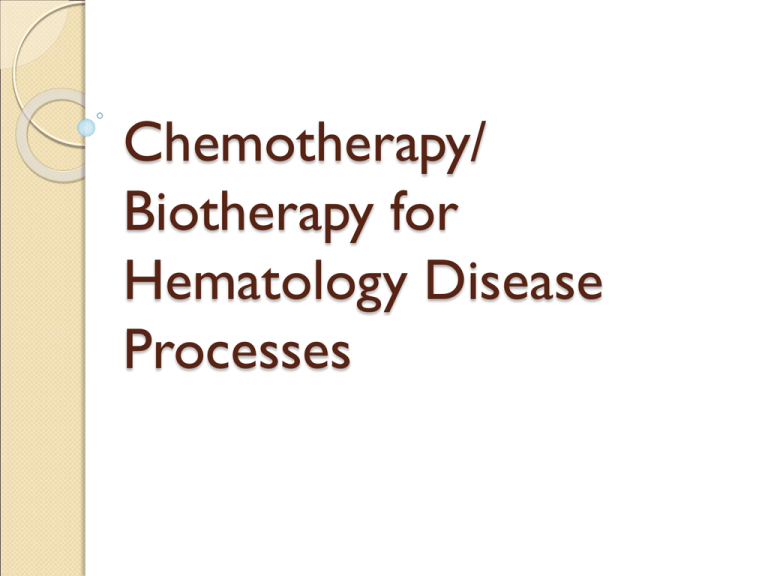
Chemotherapy/ Biotherapy for Hematology Disease Processes Hematology Disease Processes Sickle Cell Anemia Immune Thrombocytopenia Purpura Autoimmune Hemolytic Anemia Paroxysmal Nocturnal Hemoglobinuria Sickle Cell Anemia Hemoglobinopathy Genetic Disease Presence of Hemoglobin S, alone or in combination with another abnormal hemoglobin form. Red blood cell is sickle shaped with a shortened life span Incidence and Etiology of Sickle Cell Anemia Most common genetic disorder in the United States (Hgb SS) Approximately 72,000 cases in United States Morbidity Associated With Sickle Cell Anemia Infection Vaso-occlusive crisis Acute chest syndrome Splenic Sequestration Aplastic Crisis Cerebral Vascular Accidents Chronic Complications with Sickle Cell Anemia Cardiac and Pulmonary Changes Cholelithiasis Avascular Necrosis Renal Impairments Delayed Growth and Maturation Impaired Cognition Immune Thrombocytopenia Purpura Decrease in platelets Caused by an immune mediated response Classified as acute vs. chronic Often follows viral illness Can be drug-induced Chronic ITP often associated with immune disorders Incidence and Etiology Equal incidence between boys and girls Average age 1-10yo Increase incidence in the winter months Clinical Presentation Bruising, petechiae, with or without purpura Oral or gingival bleeding Epistaxis Menorrhagia Hematuria Gastrointestinal Bleeding Recent history of viral illness Autoimmune Hemolytic Anemia Decrease hemoglobin due to red blood cell destruction Immune mediated response Can be intravascular or extravascular in orgin Incidence and Etiology No Known Cause Incidence is approximately 1 case per 80,000 Can be associated with other autoimmune conditions (SLE) Clinical Presentation Pallor, jaundice Fatigue or irritability Tachycardia, palpitations Dyspnea Dizziness Headache Splenomegaly Hepatomegaly Mental impairment, poor concentration, chance in LOC Paroxysmal Nocturnal Hematuria Acquired life threatening hematologic disorder Triad of hemolytic anemia, pancytopenia, and thrombosis Non-malignant clonal hematopoietic stem cell disorder Incidence and Etiology Approximately 8000-10,000 cases in North America and Western Europe Predominately an adult disease occurring between 30-45 years of age 10% of cases occur in patients less than 21 years of age Males and females equally affected Clinical Presentation of PNH Fatigue Abdominal pain Hematuria Hemolysis Thrombosis Bone Marrow Failure Dysphagia References Essentials of Pediatric Hematology/Oncology Nursing: A Core Curriculum, 3rd Edition, 2008 Editor: Nancy Kline The Pediatric Chemotherapy and Biotherapy Curriculum, 2nd Edition, 2007 Editor: Nancy Kline
